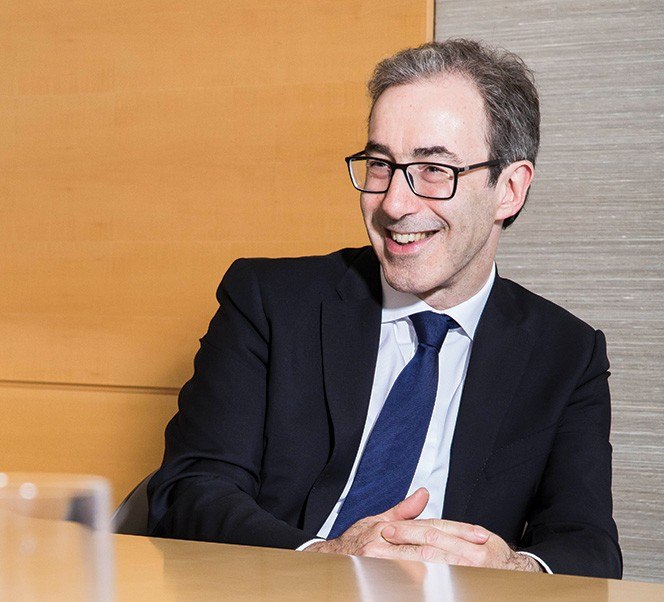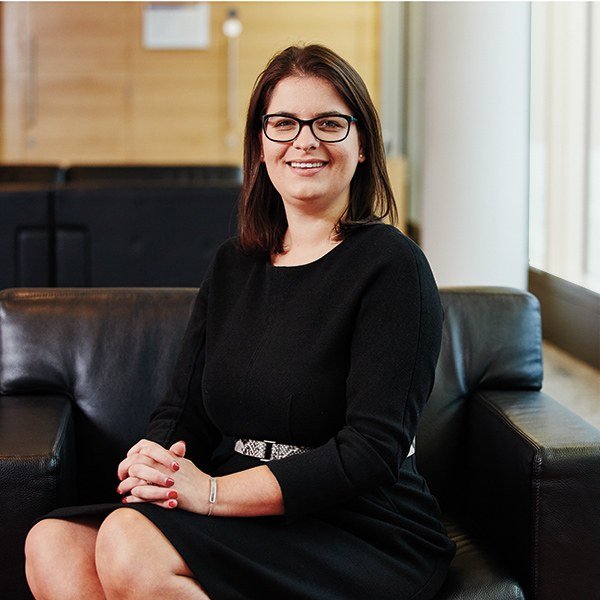‘It was so long ago,’ reflects Malcolm Sweeting, Clifford Chance’s (CC) senior partner, of his promotion to partner in 1990. ‘My only involvement in the process was playing football in Hackney one winter when a junior partner sidled up. “It’s all looking good,” he cryptically confided, before sidling away. Later, the senior partner rang me to say congratulations.’
Nearly 30 years from that night, the once obtuse path to partnership has been replaced with an excess of procedure, meaning the latest generation of partners has gone through a very different tournament to their colleagues currently nearing retirement.
That shift has been as much forced upon leading law firms by less deferential attitudes of young associates (not to mention society as a whole) as a proactive move from law firms. In Legal Business’ first in-depth look at the modern realities of partnership for five years, we conducted dozens of interviews with new partners, and their older counterparts.
In a post-banking crisis environment in which leading City firms have maintained a decade-long squeeze on partner promotions, it remains hugely challenging to make partner (see full breakdown and analysis). The UK’s ten largest practices by revenue on average promoted fewer than seven new partners in their home market in 2018. Even with ten new UK partners at Linklaters, the entire Magic Circle made up just 28 in the UK this year, out of a global round of 89. Back in the boom year of 2008, the same group created 137 partners globally.
Yet the legal environment has materially changed since the collapse of Lehman Brothers. In-house teams have expanded dramatically in scope, there are more promotion opportunities at the local arms of US law firms and flexible working as a freelancer or within law firms has become a mainstream option. Moreover, the newer ranks of associates and young partners, who have matured during a period of economic turbulence, are more comfortable with the notion of quitting law to work in other fields.
Notes Allen & Overy (A&O) managing partner Andrew Ballheimer: ‘It’s now a more fluid market and [junior lawyers] are more sophisticated in understanding options open to them. In my day, we turned up with no idea in terms of career. You just worked; got your head down.’
Slaughter and May senior partner Steve Cooke puts the shift in even starker terms: ‘I come from a generation which joined a firm and tended to think about options less. I was hilariously ill-prepared. I didn’t look far ahead. Then you find it’s what you want. There are different options now.’
Can the profession change partnership enough to keep it relevant for a new generation?
The agony of choice
‘Partnership wasn’t my dream as a little girl,’ notes Clare Connellan, a partner in White & Case’s arbitration practice since 2016. Quite. One thing that hasn’t much changed is the motivation for going into law in the first place. The draw of a well-paid, ‘respectable’ career still carries much initial weight, even with younger lawyers.
Where associate attitudes have diverged is how they feel about partnership and the law once inside the industry. Generation X partners recall quickly wanting to join the club – and wondering how that magic happened: ‘asking about your chances of becoming partner was the kiss of death in the 1980s’, says Ballheimer. ‘Too pushy.’ By contrast, the current generation is more likely to see the law as a stepping stone, rather than focus on partnership as the ultimate goal.
One senior associate at a Magic Circle firm being lined up for partnership concedes: ‘Partnership still holds a certain kudos, especially among clients. But it is a longer and more uncertain path. Partnership isn’t an automatic choice anymore.’

Andrew Ballheimer, Allen & Overy
Stephenson Harwood senior partner Roland Foord notes that more mid-level associates are ambivalent about partnership. ‘There have been cases with three different associates who have said: “I’m not sure what I want to do, can I have three or four months out to make up my mind?” That would never happen 20 years ago. It’s part of the modern mindset.’
These comments illustrate a switch since Legal Business’ last in-depth analysis in 2013, ‘Few are chosen.’ Then the clear feeling was that firms held all the cards in determining promotion rounds. Now veteran lawyers believe the balance has moved, with more of the most-talented young lawyers opting out of the track of their own volition.
Cooke, who was made up in 1991, says bluntly: ‘The pool of people who wish to become a partner has shrunk. You lose people you would like to stay more frequently. Start-ups and law tech are quite popular. A lot of people join law firms to gain experience and move on. That is a modern phenomenon.’
‘I’m not sure partnership is the end goal anymore,’ says Baker McKenzie partner Kate Corby. ‘The people who are already senior associates, most of them still aspire to it, but there’s been a loss of a universal aspiration at the more junior end.’
Yet even for the most hard-bitten veteran rainmakers, the view of young lawyers is one of near-universal admiration for their work ethic and ambition, far from the caricature of flaky Millennials (the term is generally taken as defining those born from the early 1980s to the late 1990s). ‘The young lawyers are intellectually very talented,’ notes Cooke. ‘Low-level work doesn’t play to their strengths.’
If there is a negative it is the unease that this group has grown more privileged. ‘Social mobility has got worse,’ says one Magic Circle partner, who notes recent falls in state-educated trainees at all elite London law firms. ‘We are thinking about what we should do about that. People from harder backgrounds can have more grit.’
Connellan, who studied English and French law, joined White & Case as an associate in 2008 having trained at Lovells. She describes her attitude to making partner: ‘At every stage of my career I’ve thought of the options, questioned whether it was the right move and taken stock. I didn’t feel I was on an escalator and couldn’t get off.’
David Martin, a Linklaters trainee who became a partner in 2012, reflects: ‘I remember thinking, do people get made up here? I looked around at alternatives, in-house, US firms. I didn’t want to turn around in seven years’ time and think: “I’m not going to make partner!” Fortunately for me, at the right time, a senior partner said: “You’re in our thoughts.”’
Jay Dharan, a director at private bank Coutts, has plenty of chances to observe the new breed. She notes: ‘The newly-made up partners I’ve taken on this year have really good interpersonal skills. They’re down to earth.’
Her colleague, Coutts’ head of professionals Alex Liddle, picks up the theme and challenge for new partners seeking to balance technological and personal fluency. ‘The interconnection is interesting but it’s what you do with that. The current recruitment drive is all about finding people with the right skillset who understand how to strike the best balance between technology and human interconnection.’
The conversation
Jonathan Kewley’s route to CC partnership couldn’t be further removed from Sweeting’s experience on that frosty football pitch. Kewley, who was made up in 2017 and is co-head of the firm’s tech group, is positive about the system.
‘The process is exceptionally transparent. There is a partnership council. You have to give a ten-minute speech on why you should be considered. The fact that it’s a difficult process speaks to the quality of the partnership. It instils confidence.’
Tara Waters became a corporate partner at Ashurst having retrained as a lawyer after working in the New York tech industry for several years. ‘Getting to partnership is an intensive process. You need the right approval from the admissions committee. You need to show you are going to contribute and bring in work, but also that you understand what it takes to be a partner. You get assessed as a leader, the business case and how you understand the financial management of the firm.’
She says Ashurst’s increasing focus on technology clients and her specialist background helped her carve out her niche. ‘Coming from a non-traditional background helped me differentiate myself. I had unique skills.’
Comparing Cooke’s experience of partnership with that of Victoria MacDuff, who became a Slaughters partner in 2016, highlights how the process has changed.
‘It used to be opaque. You worked with a load of people outside of your group who you knew were looking down the microscope at you. You knew you were in the frame and you worried about the partners’ meeting that would decide your fate. That was about it,’ recalls Cooke.
MacDuff notes that aspiring partners working across practice groups has remained – befitting Slaughters’ prized generalism. But that is where the similarity ends. She says she was encouraged to focus on making partner by the ability to talk openly about her prospects in a way unheard of in the 1990s. ‘The head of my group had an honest and transparent conversation, which was essential for my personality type. A good friend, Sally Wokes, was made up the year before me. It was useful to have someone I could talk to about the challenges. We are the same generation and could relate more readily. You do have to work incredibly hard. It helps to know someone else who has reached the same goal. It spurred me on.’
Unusually, Slaughters still does not require associates to put forward their own business case. Says MacDuff: ‘For a number of years before becoming a partner, you work on high-profile, technically-challenging deals to demonstrate your skillset. That’s the test of your ability to become a partner.’
She argues the model prepares lawyers for the new challenges the younger generation has to face. ‘It leads to a cross-fertilisation of ideas and thinking about things in a new way. Say you use a certain type of legal tech on one deal, you might be able to use that in a different context. You challenge the norm and become more rounded.’
Peter Banks, corporate partner at Allen & Overy since 2017, cites partners Stephen Lloyd, Gordon Milne and Karan Dinamani as drivers for his decision to go for partnership. ‘We build things up and pitch together as a team. That sort of mentor is very important. That flipped a switch in me. I saw them and thought: “I want to do that!”’
He extols the benefits of a rigorous process. ‘You put a lot of pressure on yourself but there is a huge amount of support. When you’re in it you think the sole purpose is to assess whether you are suitable to be a partner, but a huge part is to prepare you for what comes next.’
Oliver Brettle, partner at White & Case, says of modern partnership: ‘There is much more of a business focus and the firm is open about the criteria it uses to evaluate its partner candidates. What we are trying to avoid is surprises.’ Connellan observes: ‘Your own personal business case has to fit with the firm’s business case. For me, international arbitration made sense because what I and the firm wanted were aligned.’
The White & Case system includes an internal dossier where those who have worked with the candidate contribute about their experiences. The associate puts together the business case with the regional sector head and presents to the new partners committee.

Victoria MacDuff, Slaughter and May
For all its stress, a structured path to promotion suits young lawyers and allows for earlier decisions by mid-level associates about their careers. On the transition to partner, MacDuff says variety and autonomy are the biggest attractions. ‘I love being a partner. As a partner you are managing transactions, fostering client relationships and mentoring talent internally. You use a wide range of skillsets every day. As an associate, there is less diversity.’
Banks speaks for many of his contemporaries when he flags the increased management as one of the main changes to the working life. ‘Managing people wasn’t a cliff-edge step change but you are more formally responsible to the team. You end up spending less time on billable work and more on client development.’
Martin agrees. ‘HR stuff takes a lot of time. If you only knew how long it takes to do appraisals. But it’s our business and we have to run it.’
Even for hard-bitten veteran rainmakers, the view of young lawyers is one of near-universal admiration for their work ethic and ambition, far from the caricature of flaky Millennials.
Apart from the oft-cited advantage of increased client contact, younger partners unanimously agree they feel more in control of their time and like the ownership of the business. If there is one common thread between the Generation X partners and their Millennial counterparts, it is the pursuit of self-determination.
‘The main features of partnership are building the practice, relationships and the network rather than just doing the deals. That hasn’t changed a huge amount,’ says Cooke.
Technology and mobile working have, of course, changed, but at least newly-minted partners accept that Faustian pact of the always-on partner having known no alternative. Says Banks: ‘On one hand you are always contactable, on the other, you are very mobile. With technology, you can harness the benefits of working while exercising a degree of discipline so that it doesn’t dominate your world.’
A young person’s game
As attitudes to partnership change, the question inevitably arises as to how enduring the model will remain for attracting, retaining and motivating the lawyers of the future. The model – based on delayed gratification – has served the legal industry extremely well but has been tested by more transactional and mobile attitudes to work across society and lawyers young and old.
The good news is that there is widespread agreement that the role retains much of its pulling power, in large part because clients still strongly value it. Rich rewards, of course, speak to a more materialistic age, and a sense of ownership has become an even stronger attraction for a generation that has reached adulthood amid economic turbulence and with the expectation that they would have to relentlessly compete rather than fit into a defined career role for life.
‘People are still very attracted to partnership as a model, but it has to have meaning,’ concludes Ballheimer. ‘It has to mean you are entrepreneurial as the owner of the business. If you’re a glorified associate, it doesn’t have the same meaning. There is an emphasis here on ensuring this is a real partnership, not just a hierarchical thing.’
The prized autonomy of partners, which was confidently predicted a decade ago to be fading as law firms became corporatised in governance, has if anything reasserted itself in recent years. And even the most jaded of industry observers would concede that law firms have hugely upped their efforts in terms of detailed feedback for their potential partners.
Linklaters senior partner Charlie Jacobs concludes: ‘I still think partnership is an important part of our culture. It makes us take a long-term view of the business. Partners are simply custodians. You need to make sure the partnership is in better shape for the next generation.’
Coutts executive director Dennis Howard strikes a similar note: ‘Partnership still carries a lot of gravitas and status, and for a lot of new partners that brings more opportunity as well as responsibility.’
These realities alone will probably not be enough to stop leading law firms facing a situation in which they struggle to find enough top-quality talent willing to stick it out for partnership. The dramatic expansion of the in-house profession in the UK has opened up an attractive career alternative, which is drawing out huge numbers of mid-level associates. Anecdotal claims and hard data illustrate that large numbers of talented women lawyers are still selecting themselves out of the partnership race at top firms (see box below).
Ballheimer notes: ‘There is a perception among some, especially female associates, that the partnership process is slightly harrowing. It is not as harrowing as people think. Female candidates often do much better in the interview process than men.’ The message certainly doesn’t appear to have got through to A&O associates: just 15% of the partners the Magic Circle firm has promoted over the last three years have been female.

Clare Connellan, White & Case
There will be increasing pressure on law firms to start making partnership decisions earlier to engage their associates, even if overall levels do not change. While only a handful of US firms have deployed this approach, prolific promoters like Kirkland & Ellis and White & Case and, to a lesser extent, Latham & Watkins are some of the most influential players in the City market now.
Kirkland, which has made up 268 partners over the last three years, including 97 this year, with 13 in the UK, makes a disruptive virtue of its model of promoting large numbers of lawyers to its non-equity ranks at an early stage, before giving them a crack at equity.
Finance partner Neel Sachdev argues this approach has been key to engaging young lawyers: ‘Today, there are lots of different career options: start-ups, Google, banking… At Kirkland, we look to find young graduates who want to become partners. It’s always been an accelerated and transparent career path, but it’s now more transparent. Private equity is a young person’s game, and with our model you get young, energised, entrepreneurial lawyers.’
Weil, Gotshal & Manges has just announced changes to accelerate its track, so partners are typically made up seven-and-a-half years after qualification. Announcing the change, executive partner Barry Wolf said: ‘The current generation of lawyers doesn’t want to wait nine years for a promotion decision.’
Neither are such shifts merely a US phenomenon. Slaughters and Linklaters, for example, have been proactive on this front, with both firms respectively appointing 29% and 26% of their current partnerships in the last five years. Notes Cooke: ‘We are all restless souls here. Added to that, this is our youngest partnership ever. There is a young weighting with new ideas.’
It seems an astute move because if there is one thing partners young and old agree on it is that there will be more pressure on law firms to sell the notion of partnership to the best associates, rather than expect deference and institutional mystique to do it for them.
The prize is engaging the best-educated and most commercially aware generation the industry has ever seen. Judging the industry in recent years, it turns out the tournament of partnership is as dominant as ever in law. But these days, it is increasingly hard to work out which side – law firm or prospective partner – is calling the result. Long may it continue. LB
nathalie.tidman@legalease.co.uk
tom.baker@legalease.co.uk
Partnership and women – three steps forward, two back
Our research suggests recent efforts towards gender diversity are having some impact at many major UK and US firms. Firms to average more than 30% female promotion rounds over the last three years include Sidley Austin, Ashurst, Slaughter and May, Hogan Lovells, Herbert Smith Freehills (HSF), Baker McKenzie, Latham & Watkins, Kirkland & Ellis, Debevoise & Plimpton, White & Case and Stephenson Harwood.
Ashurst and HSF lead the pack among UK peers, with female promotions making up 40% and 45% respectively over three years. US-based advisers were hot on the heels of their London counterparts, however, with Sidley and Debevoise & Plimpton achieving among the highest proportion of female promotions in our research with 40% and 42%.
Perhaps surprisingly, some mid-tier players cited had lower rates of female promotions than larger rivals, though the firm with the lowest proportion of female promotions in the table was Allen & Overy with just 15% of its new partners. Modern partnerships only get so progressive apparently. The rest of the Magic Circle ranged from 26% (Linklaters) to 33% (Slaughters). At these levels, it will take decades to much impact the gender mix of elite City firms. (See full breakdown and analysis.)
This article is part of Legal Business‘s Partnership Special. To see the full report please click here


